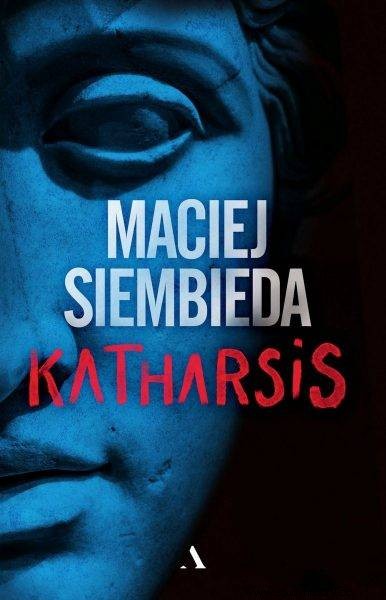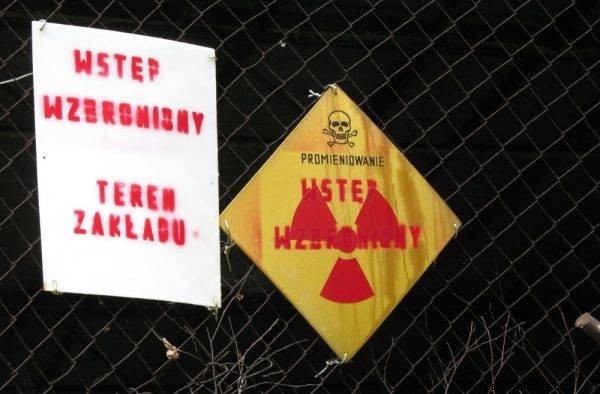In the years 1949–52 in the uranium ore mine in Kletno in Sudetes, the Soviets - with the hands of Poles - were extracting the raw material for building their own atomic bomb.
In July 1948, while examining the old mine heaps in Kletno, Soviet geologists discovered increased gamma radiation at the medieval tunnel of St. Paul (later adit No. 7) and St. James (later adit No. 9). In the same year, the Soviets began preparatory work for the exploitation of the deposit. Sudeten uranium was to be used by them to build their own atomic bomb. He was not in the USSR. And if Stalin wanted to outdo the United States in the Cold War nuclear race, he urgently needed isotope 235, which was necessary to construct a lethal weapon.
The code name of Kopaliny
The Russians did not stick around. Initially, they extracted uranium from heaps, but soon began digging pavements. In just three years, they made 37 kilometers of excavations on 9-10 levels - including three shafts, 27 drifts and numerous side workings. Works in Kletno could be carried out under an agreement between the government of the People's Republic of Poland and the "fraternal" Soviet Union concluded in 1948. It allowed them to search for uranium ores all over the country.
However, while for the exploration work they employed specialists from their own geological surveys, they did not intend to "get their hands dirty" with the extraction itself. The engineering staff was exclusively Russian, the workers were Polish. Among them were primarily forced laborers - prisoners of labor camps, conscripted soldiers, "reactionaries" and "enemies of the people." There were also few volunteers - professional miners, mainly from Upper Silesia, who came to the Sudetes, attracted by the promise of high wages. Even the Morawka housing estate was built in the nearby Stronie Śląskie for the needs of the mine workers. Regardless of whether they labored for hunger rations or generously paid - they all had to pay a terrible price for it.

The engineering staff was solely from Radzice and the workers were from Poland (illustrative photos).
Their victim remained top secret for many years - just like the work in the mine in Kletno, which received the code name "Kopaliny" ("Region III" of the Industrial Plant "R-1"). "The search was covered with a secrecy so far as that mentioning the name of the raw material sought was considered an act on behalf of foreign intelligence . Instead of "uranium" in the reports, "metal" was written. The terms R2, P-9 or the enigmatic "non-ferrous metals" appeared in official documents and letters. The transports to the USSR, at least officially, consisted of "waste land".
Twelve hours a day, hands loading
It is estimated that during the relatively short period of operation of the mine in Kletno, the Soviets obtained about 20 tons of pure uranium - 5% of all Soviet production in the Sudetes. " Robber exploitation was carried out in it. Only uranium mattered, and the fluorspar produced on this occasion was treated as waste. It was partially used for backfilling the exploited workings. The rest ended up in heaps ”, write Robert Borzęcki and Aneta Marek.
The conditions were terrible. Since the Russians relied on free slave labor, they did not care about precautions. Disease and accident statistics were not kept, but there were certainly many of them. In his latest historical novel Katharsis Maciej Siembieda describes the everyday life of Polish forced laborers in the Kletno mine:
Twelve new ones entered the underworld a quarter of an hour ago. The foreman gave them a short chat about the work they would be doing. (...) he showed them the rails on the bottom and the wagons half the size of the bathtub in the bathhouse. He said what was not allowed. Take even the smallest pieces of rock out of the mine. Even so small that you can hide them as dirt under your fingernail. You must not ask questions. Neither talk . These were all very dangerous things. Each of them went to the UB, and not all of them returned from there. And certainly not on their own feet (...).

The text was inspired by the latest novel by Maciej Siembieda, Katharsis, which has just been published by Agora Publishing House.
"You work twelve hours a day," he explained. - The one who shoots the charges goes to the forefoot first. The rock crumbles and then more come in. They load the pieces into wagons and push them backwards. Loading with hands. There will be no gloves. But if I see any of them cut their arm on purpose to avoid work, they'll talk to the Security Service. Understand?
pneumoconiosis, radiation sickness and vanishing lungs
It wasn't just gloves that were missing. The miners also did not receive dust suits or masks. No wonder at least half of the mine's employees complained of respiratory problems. But the greatest threat was invisible. Maciej Siembieda in Katharsis describes:
Shotgun fell ill four days later. He had been complaining for a long time that he was burning him in his stomach with real fire. He could not swallow the stale bread that was given to them in the morning with the bitter coffee. He ate only soup, the staple food of the day. But the baking continued. One day he couldn't bear it. Unable to even spit after vomiting up bile, he walked over to the sidewalk wall and drank the icy water running down it. The next day he was speechless.
For many miners, working with "material" quickly began to have side effects in the form of chronic headache and fatigue. Skin and fingernails were coming off their hands. Hair and teeth fell out . Since the workers did not realize what they were actually mining, they also did not care about their own safety. They drank mine water. Before meals, do not wash their hands. They also carried radioactive dust to their homes (or barracks) - on work clothes. The victims of the invisible killer were not only forced laborers, but also experienced miners. In Katharsis we read:
Alojz, a miner from Katowice, (...) came to the Sudetes of his own free will, encouraged by the agitation carried out in Silesia by Przedsiębiorstwo Kowarskie Kopalnie and promising high wages for his work in the extraction of "non-ferrous metal ores". (...) Alojz already had money, which was full of a couch, but he did not have time to spend it. First his hair fell out, then his teeth . After X-ray in the clinic, the trace of the Silesian was lost like the contour of his lungs, which the doctors could not see on an X-ray .
And although the cases described by Siembieda concern the novel's heroes, their counterparts in real life can be easily found. For example Józef Buczkowski. As a result of the manual sorting of uranium, he suffered from excruciating migraines and chronic disability, and his skin fell completely off his hands.
One of many
During the first two years of operation of the mine in Kletno, the exploitation works were very intensive. From the beginning of 1951, production began to decline significantly. “From the beginning of 1953, the Kopaliny mine in Kletno operated within the framework of Przemysł Arsenowy in Złoty Stok, although uranium mining continued for another quarter. Under the new administration, the mine started underground fluorspar mining. ”

Warning boards on the premises of the R-1 Industrial Works
This continued until 1958. Later, underground mining was completely abandoned. Some of the workings were flooded and the entrances to them collapsed. Even when the mine was not formally operational anymore, it was still supposed to remain a secret . It was similar in other places. The mine in Kletno was not the only such plant in Lower Silesia. It was only part of the Soviet so-called . Zakłady Przemysłowe R-1, which also included, inter alia, mines in Kowary, Radoniów, Janowa Góra or Marcinków . In total, Zakłady Przemysłowe R-1 employed about 20,000 people. The last of the mines - in Kowary - was closed in 1973.
Inspiration:
The text was inspired by the latest novel by Maciej Siembieda Katharsis , which has just been released by Agora Publishing House . The seemingly independent stories of the four heroes of Katharsis they intersect in one place:in the uranium ore mine in Kletno in Sudetes, where in the years 1949–52 the Soviets mined the raw material to build their own atomic bomb. 
Bibliography:
- Robert Borzęcki, Aneta Marek, Remains of uranium ore mining in the Śnieżnik Massif , "Hereditas Minariorum", 3, 2016, pp. 109-133.
- Robert Klementowski, In the shadow of the Sudeten uranium. Uranium mining in Poland in 1948-1973, IPN Wrocław 2010.
- Exploration and exploitation of uranium and fluorite ores , Historia, Kletno.pl (access:May 17, 2022).
- Wojciech Rejman, Uranium mines in Poland , "Knowledge and Life" No. 9/1996.
- Irena Stein, Secret uranium mines in Silesia. The miners' teeth fell out, the skin peeled off , Focus (access:5/17/2022).
